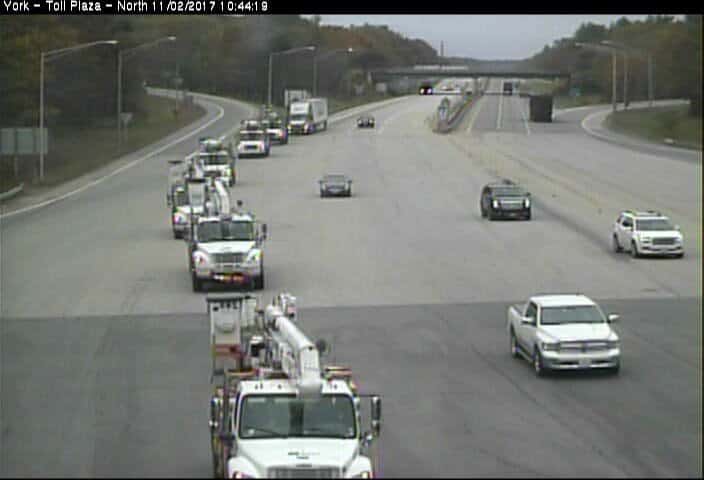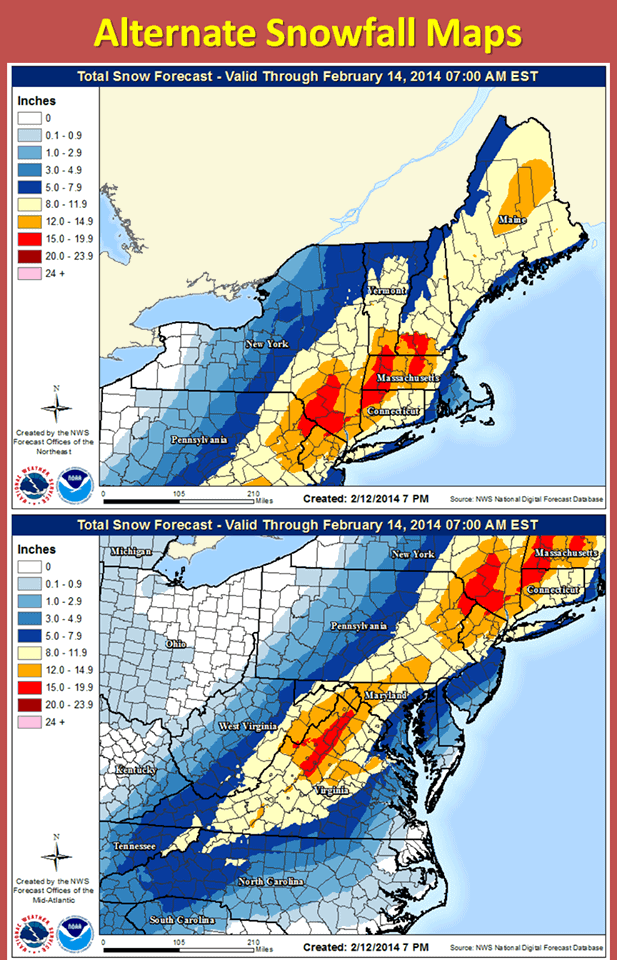Hurricane Force Winds Cause Widespread Power Outages on Anniversary of Hurricane Sandy
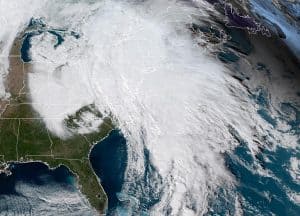
A Coastal Storm Strengthened by the Remnants of Philippe Slams into New England with Gusts to 133 MPH
Five years ago, Hurricane Sandy roared up the East Coast with a circulation that reached all the way to Lake Michigan when it came ashore in New Jersey and left up to 12 million people without electrical power. A few days after Sandy, Mother Nature delivered a cruel follow-up punch with a Nor’easter that hampered utility crews and added more power outages to the region’s misery. Hundreds of thousands were still without power when the second storm hit and left snow and fallen trees, and in some cases collapsed roofs in its wake.
In 2017 it was Hurricane Philippe that worried East Coast residents and businesses. After crossing Florida however, the system lost all tropical characteristics. About 5:00 PM on Sunday, October 29, the National Hurricane Center reported that Philippe had dissipated as it merged with another low-pressure system near the Carolina’s. It was Philippe’s remnants that helped the low-pressure system strengthen into the storm that gave the Northeast a host of unwelcome gifts including widespread power outages.
With the storm came new anxiety for people that survived Hurricane Sandy and still struggle to cope with the devastation that caused so much loss of life and destruction of property.
Standby Generators are Must-Have Appliances
Franken-Philippe
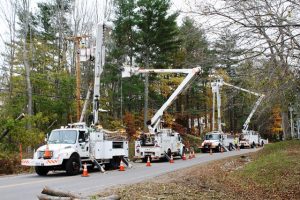
Central Main Power utility workers repair damage and restore power after the coastal storm toppled trees and caused widespread power outage all across New England
Though not truly a Nor’easter like the one in 2012, the weird storm was characterized as having strength comparable to a Category 1 Hurricane by Weather Underground Meteorologist Bob Hensen. An upper level trough carried an intense low-pressure system from New York up into Canada. On its heels was a high-pressure cold front that pushed the remnants of Philippe from just off the Carolina’s onto the New England coast.
Winds gusted up to 133 MPH in New Hampshire and 92 MPH in Maine—sustained winds greater than 74 MPH are hurricane force winds. 133 MPH, if it were sustained wind, would be similar to a strong category 3 or a category 4 hurricane. Elsewhere in New York and Vermont the wind gusts reached 67 MPH and 63 MPH—comparable to the gusts of a moderately strong tropical storm.
Power Outages affected more than 1.2 million utility customers with Maine taking the worst damage. Central Main Power warned residents that it would take a week to fully restore service to all customers. Four days after the storm, power outages still affected nearly 350,000 New England utility customers.
Winter Emergency Preparedness Checklist
Atlantic Hurricane Season Not Over
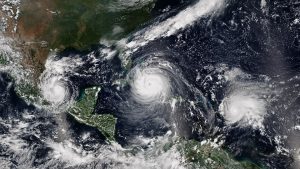
Hurricanes Katia, Irma, and Jose (left to right) were active at the same time in the 2017 season following Hurricane Harvey and Preceding Hurricane Irma
The Atlantic Hurricane Season runs from June 1 through November 30. As the season marches on toward the end, many are already breathing a sigh of relief. However, even at the close of an active hurricane season there remains the threat of more tropical storms. The ocean is warm enough and with the right conditions, a good chance exists that another named storm will form.
This late in the season, most storms form in the western Caribbean Sea. Most drift into Mexico or Central America, but some cross the Caribbean into the Gulf of Mexico or over the Straits of Florida. Once there, they can go almost anywhere from Texas to Florida or anywhere along the East Coast.
Currently the atmosphere over the Atlantic is unsuitable for formation, but as we move closer to the middle of the month, chances increase again. Eighteen named storms have formed after November 1st since 1996. Hurricane Otto killed 23 in Central American in 2016. Nine storms during this period formed on or after November 20 including four in December. Tropical Storm Zeta formed on December 30, 2005, the most active Atlantic Hurricane Season on record with 28 named storms.
How to Prepare Your Home for Hurricane Season
Stay Prepared
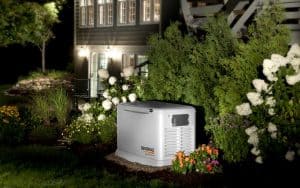
A Generac Standby Generator keeps the heat on, the refrigerator cold, while providing electricity for all your power needs.
2017 is already on the books as an active season and looking past the next five days, forecasters believe another storm could form anytime in the next month. If you’ve already weathered a storm this year, don’t lose vigilance. And if you were among the lucky that storms only brushed by, stay prepared.
- Restock emergency supplies of non-perishable food and drinking water.
- Perform regular maintenance on standby generators and portable generators.
- Rotate fuel supplies for Portable Generators.
- Review disaster plans and evacuation routes.
- Check the National Hurricane Center frequently for updates.
- Install a backup generator for home if you don’t have one already.
As we move forward into Fall and Winter, the possibility increases for different types of weather or combination weather such as this coastal storm strengthened by Tropical Storm Philippe.
Standby Generators Protect Your Home from Winter Power Outages

